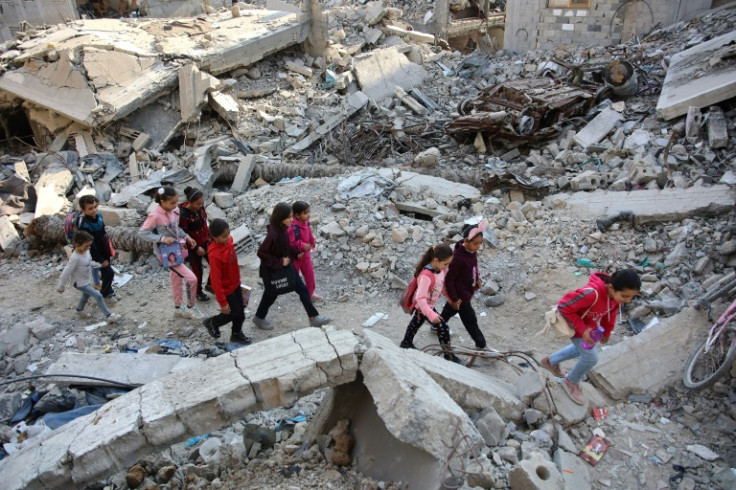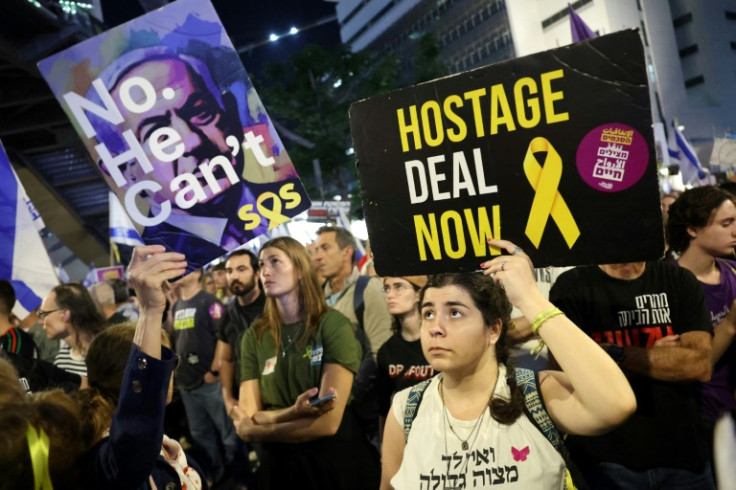Israel launched deadly strikes on Gaza and Lebanon Sunday ahead of a U.S. deadline for improved aid delivery to the Palestinian territory.
Rescuers in Gaza on Sunday said 30 people, including 13 children, were killed by Israeli strikes in the territory’s north.
The first strike early Sunday hit a house in Jabalia, killing “at least 25” people, including 13 children and injuring more than 30, the Palestinian territory’s civil defense agency reported.
Another strike on the Sabra neighborhood of Gaza City killed five people, with others still missing, civil defense said.
“A number of civilians are still under the rubble,” it said.
Contacted by AFP, the Israeli military said it was “looking into the reports” of the strikes.
Vowing to stop Hamas militants from regrouping in northern Gaza, Israel on October 6 began another major air and ground assault.
The United Nations has described the area as under “siege.” Washington has set a deadline of this coming week for Israel to get more aid into the area or face possible cuts to military assistance.
Lebanon’s health ministry meanwhile said an Israeli strike on the village of Almat north of Beirut killed at least 12 people including three children on Sunday.
The war in Gaza erupted with Hamas’s October 7 attack last year on southern Israel which resulted in 1,206 deaths, mostly civilians, according to an AFP tally of Israeli official figures.
Israel’s retaliatory campaign has killed 43,603 people in Gaza, according to figures from the Hamas-run territory’s health ministry, which the UN considers reliable.
Since late September Israel has been engaged in a two-front war after turning its focus north toward Lebanon, escalating air strikes and sending in ground troops, after almost a year of tit-for-tat exchanges of fire with Iran-backed Hezbollah. The Lebanese group said it was acting in support of Hamas.
Israel’s main military backer the United States on October 15 warned that it could withhold some of its billions of dollars in military assistance unless Israel improves aid delivery to the Gaza Strip within 30 days — a deadline that expires on Wednesday.
State Department spokesman Matthew Miller said at the time that top U.S. officials made “clear to the government of Israel that there are changes that they need to make again to see that the level of assistance making it into Gaza comes back up from the very, very low levels that it is at today.”
The demand came before Tuesday’s election of President-elect Donald Trump, who has promised to give freer rein to Israel.
On Saturday a UN-backed assessment warned famine is imminent in northern Gaza.
Aid shipments allowed to enter Gaza were now lower than at any time since October 2023, according to the Integrated Food Security Phase Classification (IPC) report.
The alert from the Famine Review Committee warned of “an imminent and substantial likelihood of famine occurring, due to the rapidly deteriorating situation”.
Israel’s military questioned the report’s credibility.
“To date, all assessments by the IPC have proven incorrect and inconsistent with the situation on the ground,” a military statement said, denouncing “partial, biased data and superficial sources with vested interests”.
IPC says its process is “evidence-based” and ensures “a rigorous, neutral analysis.”
The heads of UN agencies in early November described north Gaza as “under siege” and denied “basic aid and life-saving supplies.”
U.S. Secretary of State Antony Blinken hopes to use the remaining weeks of his term to press for an end to the Gaza and Lebanon wars, a spokesman said on Thursday, before fellow mediator Qatar on Saturday said it had suspended its role in trying to broker a deal.
“Qatar would resume those efforts … when the parties show their willingness and seriousness,” Doha’s foreign ministry spokesman Majed Al-Ansari said in a statement.
AFP

AFP

AFP

AFP




)


